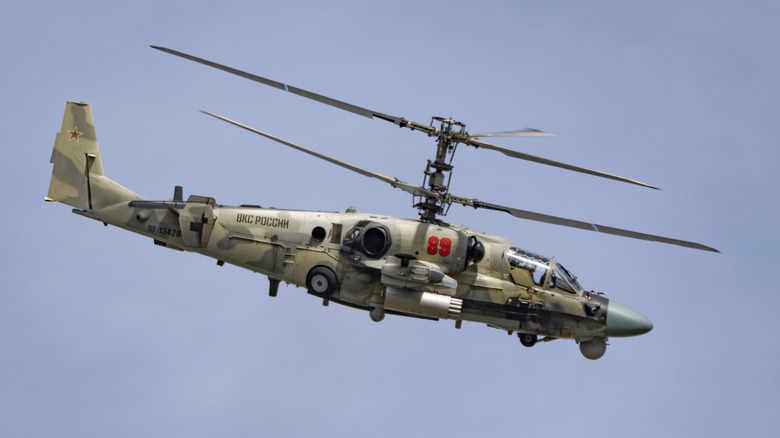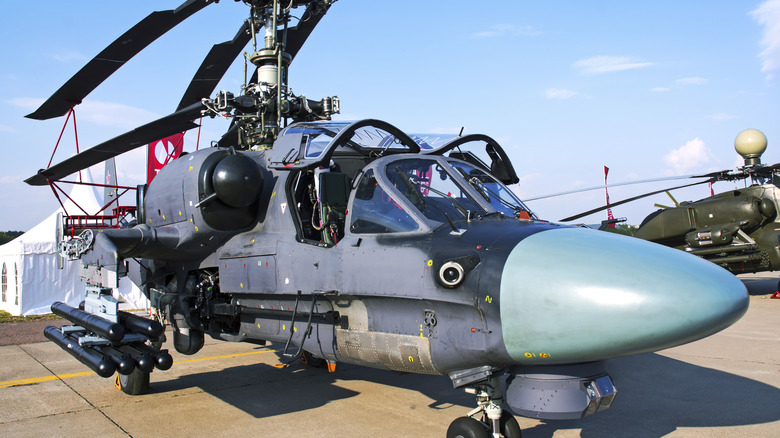Yes, There Is A Military Helicopter With Ejection Seats - Here's How It Works
Obviously there are a great many differences between attack helicopters and fighter jets, but one of the distinct advantages jet pilots have over their helicopter-flying counterparts is the ability to eject from their aircraft when there's no hope of saving it. For as long as helicopters have existed, the iconic rotating blades have prevented a similar inclusion of an eject option. However, that didn't stop Russian engineers from figuring out a solution. The Ka-52 all-weather attack helicopter is the only helicopter in active service with the ability to eject its crew of two.
It's been in operation for the Russian Air Force since 2010 and has a reputation for being incredibly maneuverable. That's thanks to its coaxial contra-rotating main rotors powered by two Klimov VK-2500 turboshaft engines. Those main rotors also negate the need for a tail rotor, which is especially helpful in instances when the tail might be blown off in combat.
One such instance happened over Ukraine and the Ka-52 was able to maintain flight regardless. Any other attack helicopter, including the AH-64 Apache and MI-24 Hind, would have quickly plummeted to the ground. However, because of it's rare feature, if the Ka-52 did go down, its pilots would be able to escape and increase their chances of survivability.
How does an ejection seat in a helicopter work?
Giving the Ka-52 Alligator, as well as its predecessor the Ka-50, ejection seats is a simple concept. You might think at first that the chopper ejects the seats to the side to avoid the roto blades, but looking at any picture of the Ka-52, you can see no discernible way for that to happen. There are some older aircraft designs that saw the pilots ejected downward through a hatch in the floor rather than up after the canopy separates. But no, the Kamov Design Bureau went a different route with its attack helicopter. When the pilot or co-pilot initiate the ejection system, explosive bolts holding the contra-rotating blades to the fuselage release it, removing it as a risk all together.
The seats work like typical military ejection seats from there. While it's a convenient feature, the U.S. and other Western nations are unlikely to adopt it for their helicopters because it's mostly unnecessary. According to BBC Future, Smithsonian National Air and Space Museum curator Roger Connor said, "Attack helicopters are flying so low that by the time you make the decision to eject and move to take action, you're probably dead anyway, so why add the weight, complexity, vulnerability, cost of an escape system that's almost never likely to be used." The Ka-52 can only reach a maximum altitude of 18,000 feet, which is a significant difference from the altitude the F-22 fighter jet can fly.

